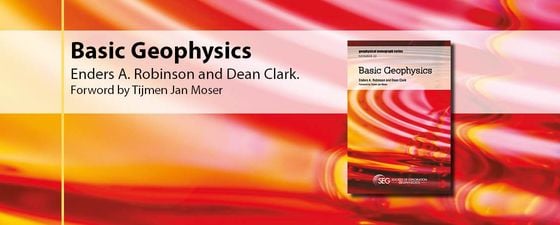An enjoyable textbook and a must have for every geophysicist.
A Book for Every Geophysicist
I received this book on December 28 – excellent timing. More or less finished with the easy Christmas reading, I was ready for something more substantial and I have never enjoyed reading a textbook as much as this. I have some concerns, but the overall impression is that this is a book every serious geophysicist should get. It is an unusual textbook and if you do not read it all, at least scan through it; I guarantee you will learn a lot of stuff you did not know, whichever theoretical level you are on.
Chapters 1 to 4 are composed of articles published by the authors in the SEG Journal The Leading Edge, while the rest is taken from their unpublished manuscript ‘Waves of Discovery’.
Modern Exploration Seismology
The Preface says “The intent is to cogently present the body of seismic theory that underlies modern exploration seismology in a format that transfers understanding to the audience.” And “If each reader can find an insight or two that were not previously appreciated, this book will accomplish its purpose.” I guarantee, whichever level you are on in seismic wave theory, you will definitely find just that.
Visual Thinking
Two more statements from the Preface: “An important mode of thinking is visual thinking” and “The figures in this book will help you see and understand seismic signals better”. I fully agree with this. Except for the front page, there are no fancy colour slides in the book, which is unusual for a text about seismic these days. There are, however, a large number of black and white drawings. At first glance they look simple, but it is obvious that the authors must have spent a lot of time making them. They are very clear and insightful and would be very helpful for anybody teaching seismic theory.
Pythagoras, Fresnel & Faraday
In addition to the theoretical stuff itself, the authors offer plenty of background information, explaining how what we all learned at university draws on earlier work by giants like Pythagoras, all the way up to Newton, Huygens and Fresnel, to mention a few. Chapter 2, for example, starts with Pythagoras, while later in the chapter you will find a section that has the heading “The eikonal equation and Pythagoras” followed by the section “Michael Faraday and the eikonal equation”.
Not Your Typical ‘Introduction to Geophysics’
An obvious question is: who should buy this book? As a retired professor I ask myself, how would I have used it if I were still teaching? And here I have an issue; the title of this book – Basic Geophysics – is misleading.
The discipline of geophysics covers a lot more that just seismic theory, it includes;
practical measurement;
gravity;
magnetics;
and much more!
None of these topics is covered, so if I was back at a university I could not use it for the typical basic ‘Introduction to Geophysics’ course. However, some geoscience students at Bachelor level still elect to focus on exploration seismic; for them the book would be very relevant. For students taking a Master’s degree in seismic it could also be important.
Teaching Geophysics
However, I encourage everybody who is teaching geophysics to read it. I know from my own experience that with tired students it is good to have something extra to talk about. Typically, that would be discussing how this “boring” subject is used in the real world, but illustrating how giants like Descartes or Euclid or Newton have influenced it would be interesting. It helps, when introducing eikonal equations, to be able to connect them to Pythagoras, and then be able to say that the Egyptians building the Great Pyramid knew about Pythagoras’s equation many years before Pythagoras. So, I am sure, if I were back in a professor position again, I would somehow find room for this book in the curriculum; it offers the reader that little extra that few other books give.
Understanding the Foundations of Geophysics
Who else should buy it? The excellent foreword by Tijmen Jan Moser says: “Scientists who know the foundation of their subject are better equipped to tackle new problems”. He is right: this is a well-written and fun book to read, and if you are a geophysicist or seismologist it will definitely help you to understand the foundations of your subject.
And finally, since this is written shortly after Christmas and I am still in the ‘Christmas gift spirit’, if you are a manager and have geophysicists in your organisation you could use it as a company gift to your staff at any time. I believe it would be a good investment, but be prepared – they might come back with ideas and questions you did not think about, so read it yourself first!





